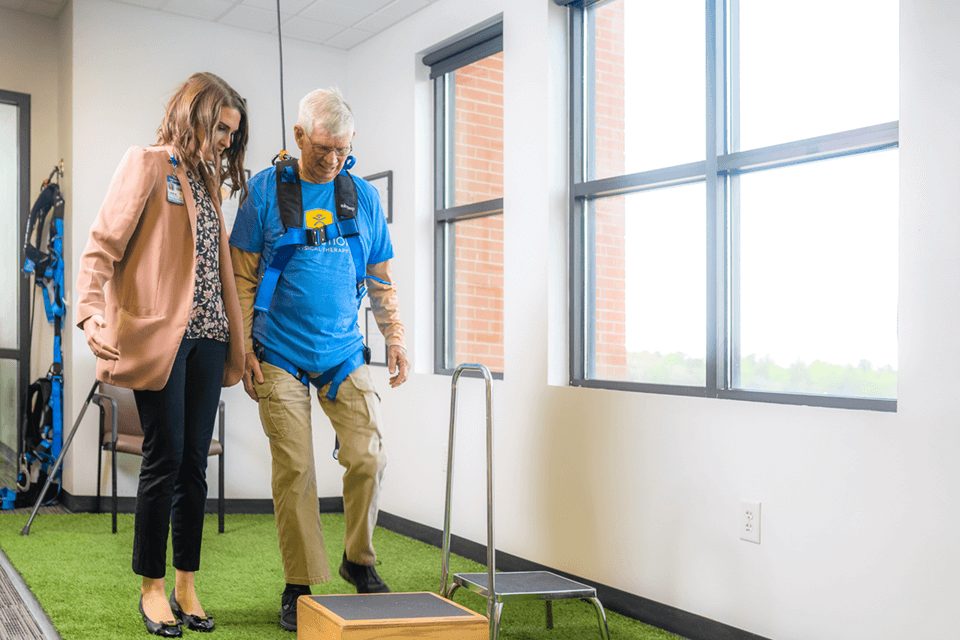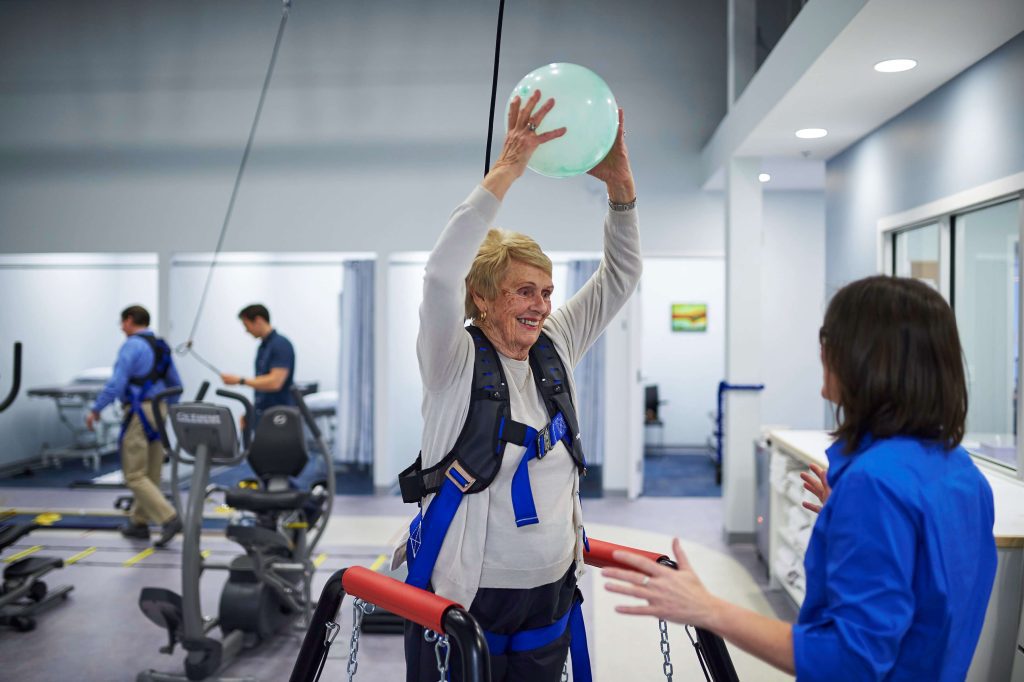How To Perform Safe Balance Assessment Tests

What Are Balance Assessments?
Balance assessments are a necessary part of physical therapy, geriatric care, and sports medicine to assess your patient’s balance and fall risks. These tests are essential to evaluate a person’s ability to maintain their balance while performing various tasks or movements.
Patients are typically asked to perform various tasks while standing still or moving. These tasks include:
- Balancing on one leg
- Walking in a straight line
- Reaching for an object while standing on a foam cushion
- And more
Therapists are able to challenge the patient’s balance and stability during these balance assessments, and then are able to customize a treatment plan for their specific patients.
Why Are Balance Assessments Important?

As you get older, falls can become more serious. Older adults have a much higher chance of falling. They are also more likely to fracture (break) a bone when falling. Broken bones can lead to disability and a loss of independence for older adults.
This negatively impacts the lives of many individuals and can lead to a decline in the ability to perform daily activities, increased risk of social isolation, and increased reliance on others for assistance. A loss of independence can ultimately lead to depression for many individuals.
Balance assessments can help prevent falls from occurring in the first place. They can also help patients who have already experienced a fall and want to recover or lower their chance of falling again. According to the CDC, falling once doubles your chances of falling again.
Some common causes of falls include:
- Balance issues
- Vision problems
- Medicines that may make you feel dizzy, confused, or slow
- Muscle weakness
- Certain illnesses, like low blood pressure, diabetes, and neuropathy
- Slow reflexes
- Tripping or slipping
What Disorders are Balance Tests Used For?
A balance assessment may be used to find out if your patient has a problem with their balance. There are many different balance disorders, including:
- Benign paroxysmal positional vertigo (BPPV). BPPV happens when the crystals in your ear get shifted out of position. It can make your patient feel like the room is spinning or their surroundings are moving. BPPV is the most common cause of vertigo in adults.
- Vestibular neuritis. Vestibular neuritis is usually caused by a virus that causes inflammation inside the inner ear. Symptoms include vertigo and nausea.
- Migraines. A migraine is a type of throbbing, severe headache. Migraines may cause nausea and dizziness.
- Meniere’s disease. This disorder causes hearing loss, tinnitus (ringing in the ears), and dizziness.
- Head injury. A head injury may cause vertigo or balance issues.
- Medicine side effects. Certain medications may cause dizziness or vertigo.
Once you learn the cause of your patient’s balance disorder, you can take steps to help them manage or treat their condition.
What happens during a fall risk assessment?

During a fall risk screening, you may ask your patients several questions, including:
- Have you fallen in the past year?
- Do you feel unsteady while standing or walking?
- Are you worried about falling?
During an assessment, you may test your patient’s strength, balance, and gait, while using the following fall assessment practices:
- Timed Up-and-Go (Tug). This test is used to assess the patient’s gait. They will start from a seated position in a chair, stand up, and then walk for about 10 feet at their regular pace. The patient will sit down again. If your patient appears unsteady or takes 12 seconds or more, they may be at a higher risk of falling.
- 30-Second Chair Stand Test. This test will check your patient’s balance and strength. They will sit in a chair with their arms crossed over their chest. Once you tell them “go”, they will stand up and sit down again. Repeat this for 30 seconds. Count how many times your patient can do this. If they are at a lower number, they may be at a higher risk for falls.
- 4-Stage Balance Test. This test checks how well your patient can keep their balance. The patient will stand in four different positions, holding each one for 10 seconds. The positions will get more difficult as the exercise progresses.
- Position 1: Have the patient stand with their feet side-by-side.
- Position 2: Move one foot halfway forward, so the instep is touching the big toe of the patient’s other foot.
- Position 3: Move one foot fully in front of the other, so the patient’s toes are touching the heel of the other foot.
- Position 4: Have the patient stand on one foot.
If your patient can’t hold position 2 or position 3 for 10 seconds or can’t stand on one leg for 5 seconds, they may be at a higher risk for a fall.
Are there any risks to a fall risk assessment?
Yes, there is a risk that your patient may fall during the assessment. If your patients are at risk of falling, consider using a fall prevention system during their diagnosis and treatment. The Solo-Step Overhead Track and Harness System is designed to keep patients protected from falls during physical therapy. The Solo-Step safety overhead system consists of a harness, which is connected to a lanyard and aluminum ceiling track so the patient is unable to fall during treatment.
Results of the Fall Risk Assessment

Results can show that your patient has a low, moderate, or high risk of falling. They may also show which areas need addressing (gait, strength, and/or balance). You may recommend your patient to:
-
- Continue physical therapy treatment to improve their strength and balance. You may tailor a specific physical therapy plan to help them gain strength and/or balance.
- Getting their vision checked by an eye doctor.
- Seeing their doctor.
- Looking at their footwear to see if any of their shoes may be increasing their risk of falling.
- Reviewing their home environment for potential fall hazards. Poor lighting, loose rugs, items on the floor, and/or loose cords are potential hazards they should look out for.
Many states allow for direct access to physical therapy examination and treatment without a referral. The patient should always talk to their healthcare provider regarding any medical diagnosis or treatment.
To learn how to keep your patients safe during their fall risk assessment with the Solo-Step fall prevention system, click the link below!